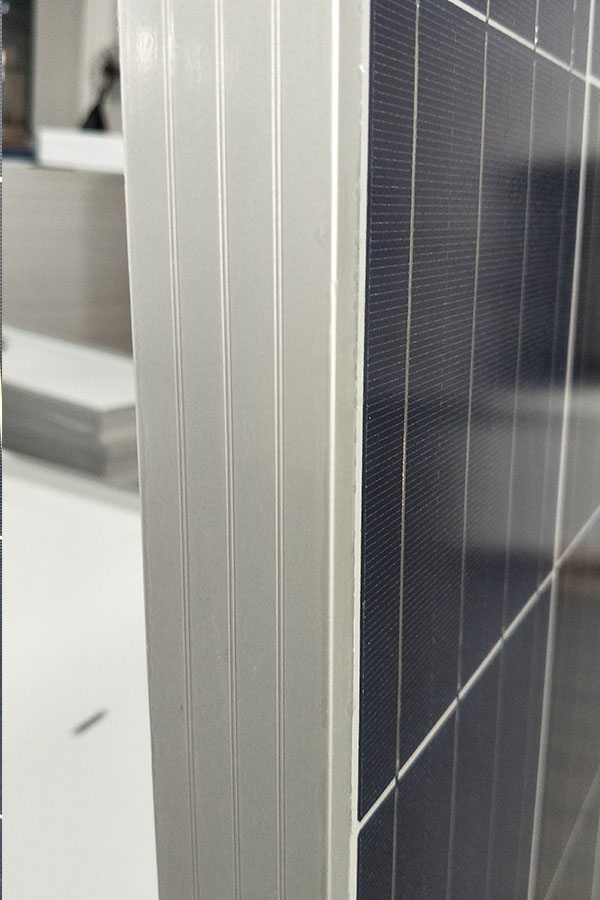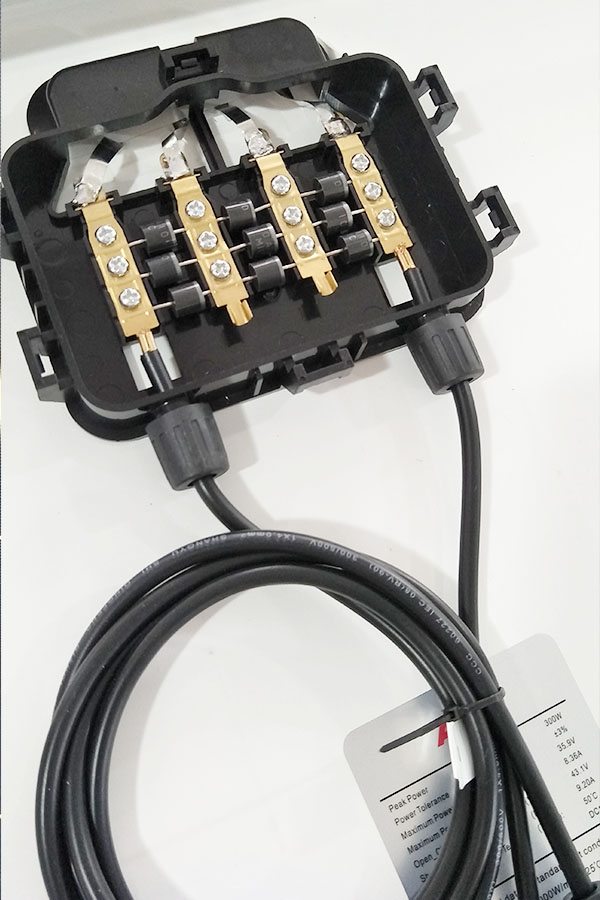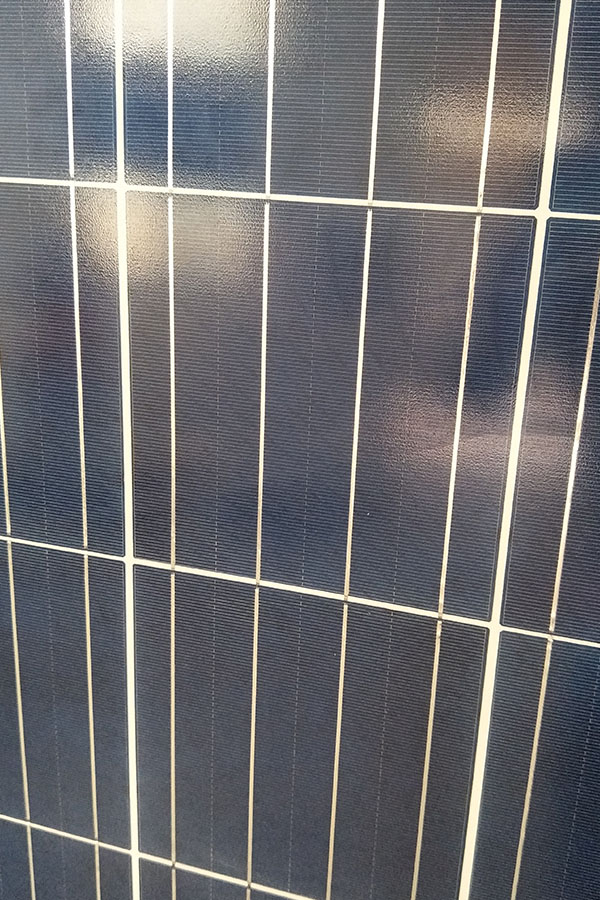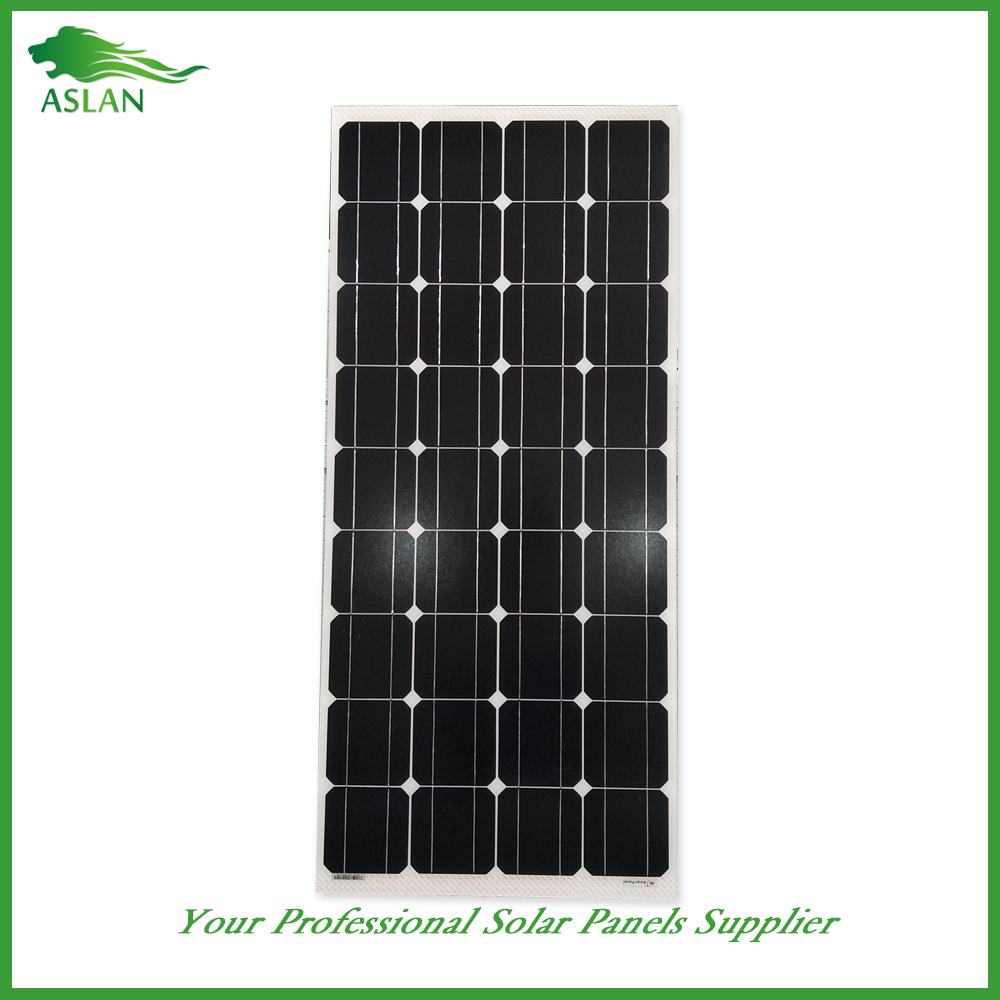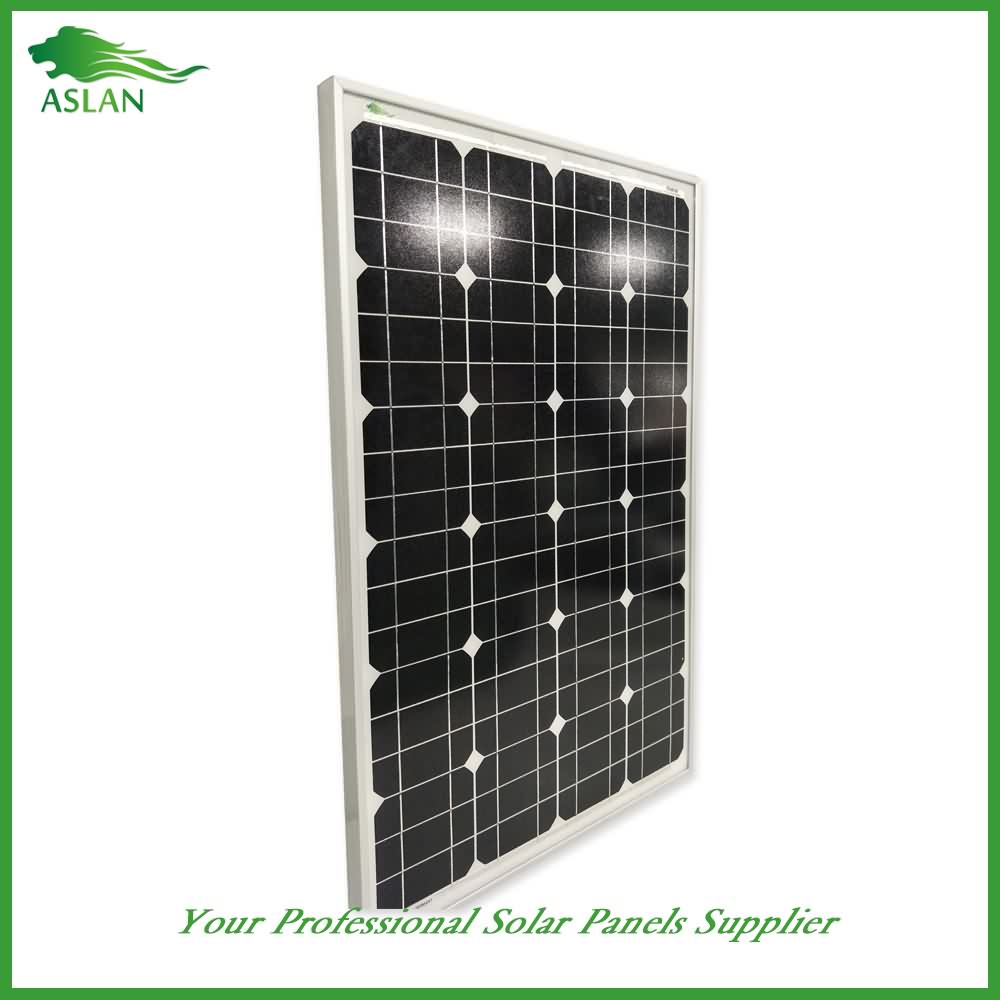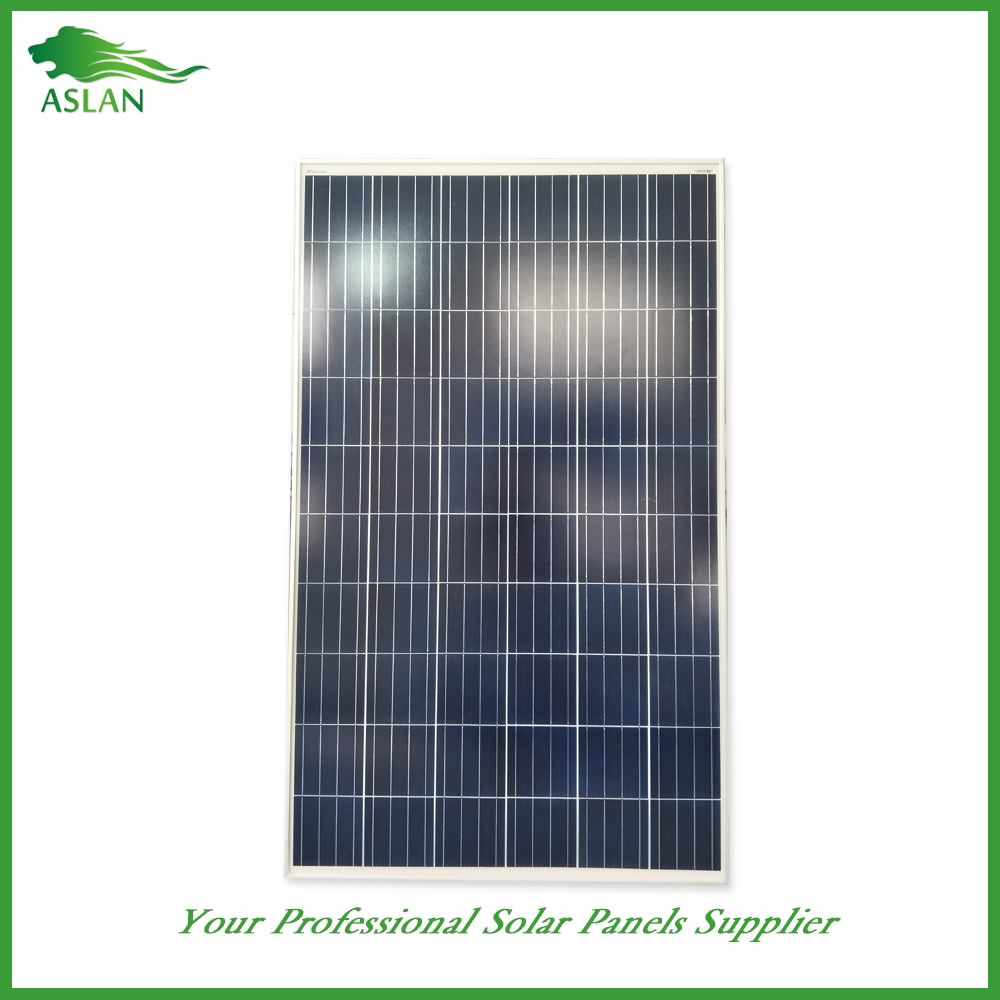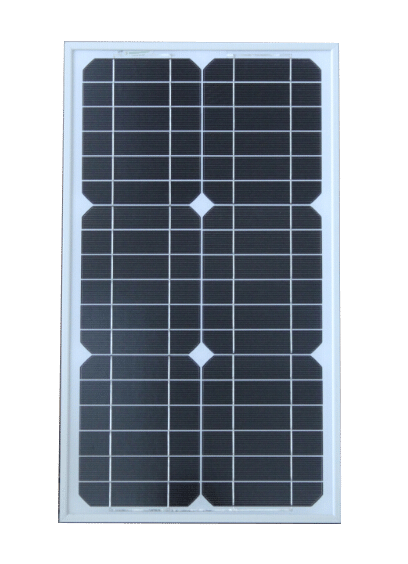Reasonable price for Poly-crystalline Solar Panel 200W Factory from Boston
Short Description:
Our company promises all users of the first-class products and the most satisfying post-sale service. We warmly welcome our regular and new customers to join us for Reasonable price for Poly-crystalline Solar Panel 200W Factory from Boston, We will wholeheartedly welcome all clients in the industry both at home and abroad to cooperate hand in hand, and create a bright future together.
Poly-crystalline Solar Panel 200W
Technical parameter
Maximum Power(W) 200W
Optimum Power Voltage(Vmp) 26.78V
Optimum Operating Current(Imp) 7.47A
Open Circuit Voltage(Voc) 32.66V
Short Circuit Current(Isc) 8.21A
Mechanical Characteristics
Cell Type Polycrystalline 156x156mm (6 inch)
No of Cell 54 (6x9pcs)
Dimensions 1482x990x40mm
Weight 17.6Kg
Front Glass 3.2mm,High Transmission, Low Iron,Tempered Glass
Junction box IP65 Rated
Output Cable TUV 1×4.0mm2/UL12AWG,Length:900mm
Temperature and Coefficients
Operating Temperature(°C): -40°C ~ + 85°C
Maximum System Voltage: 600V(UL)/1000V(IEC) DC
Maximum Rated Current Series: 15A
Temperature Coefficients of Pmax: -0.47%
Temperature Coefficients of Voc: -0.389%
Temperature Coefficients of Isc: 0.057%
Nominal Operationg Cell Temperature (NOCT): 47+/-2°C
Materials of solar panel
1).Solar Cell——Polycrystalline solar cell 156*156mm
2).Front Glass——-3.2mm, high transmission, low iron, tempered glass
3).EVA——-excellent anti-aging EVA
4).TPT——-TPT hot seal made of flame resistance
5).Frame——anodized aluminum profile
6).Junction Box——-IP65 rated, high quality, with diode protection
Superiority: high quality anodized aluminum frame, high efficiency long life, easy installation, strong wind resistance, strong hail resistance.
Features
1. High cell efficiency with quality silicon materials for long term output stability
2. Strictly quality control ensure the stability and reliability, totally 23 QC procedures
3. High transmittance low iron tempered glass with enhanced stiffness and impact resistance
4. Both Poly-crystalline and Mono-crystalline
5. Excellent performance in harsh weather
6. Outstanding electrical performance under high temperature and low irradiance
Quality assurance testing
Thermal cycling test
Thermal shock test
Thermal/Freezing and high humidity cycling test
Electrical isolation test
Hail impact test
Mechanical, wind and twist loading test
Salt mist test
Light and water-exposure test
Moist carbon dioxide/sulphur dioxide
How to install solar panel with simple UPS and disconnect Ups charging
Alien Worlds Beyond Our Solar System – Full Documentary HD
Alien Earth | Life Beyond Earth
One of eight new planets spied in distant solar systems has usurped the title of “most Earth-like alien world”, astronomers have said.
All eight were picked out by Nasa’s Kepler space telescope, taking its tally of such “exoplanets” past 1,000.
But only three sit safely within the “habitable zone” of their host star – and one in particular is rocky, like Earth, as well as only slightly warmer.
The find was revealed at a meeting of the American Astronomical Society.
Red sky
The three potentially habitable planets join Kepler’s “hall of fame”, which now boasts eight fascinating planetary prospects.
And researchers say the most Earth-like of the new arrivals, known as Kepler 438b, is probably even more similar to our home than Kepler 186f – which previously looked to be our most likely twin.
At 12% larger than Earth, the new claimant is bigger than 186f but it is closer to our temperature, probably receiving just 40% more heat from its sun than we do from ours.
So if we could stand on the surface of 438b it may well be warmer than here, according to Dr Doug Caldwell from the Seti (Search for Extra-Terrestrial Intelligence) Institute in California.
“And it’s around a cooler [red dwarf] star… so your sky would look redder than ours does to us,” Dr Caldwell said.
That first-person encounter, however, is unlikely – both because the planet is 475 light-years away and because we still have essentially no idea what it’s made of.
Images from the Kepler telescope, which trails behind the Earth and peers far into the distance as we orbit our own sun, are used to identify far-off planets by observing “transits”.
This refers to the dimming of a star’s light when a planet passes in front of it. A large team of researchers then uses additional data from Earth-bound telescopes to further explore these unfamiliar solar systems.
They try to calculate how big the planets are, and how closely they orbit their host stars.
Not everything that causes such a dimming eventually turns out to be a planet, however.
At the same time as the eight confirmed new exoplanets were announced by a 26-strong team spanning Nasa and multiple US institutions, the Kepler mission’s own scientists released another tranche of more than 500 “candidate” planets.
“With further observation, some of these candidates may turn out not to be planets,” said Kepler science officer, Fergal Mullally.
“Or as we understand their properties better, they may move around in, or even outside, the habitable zone.”
‘Star Trek’ scenario
Even once scientists have anointed a candidate as a confirmed exoplanet, the question of whether or not it is “Earth-like” is a fraught one, with fuzzy boundaries.
The size of the habitable, or “Goldilocks” zone, where a planet is far enough from its sun to hold water but not so distant that it freezes, depends on how confident scientists want to be with their guess-work.
According to Dr Cardwell, just three of the eight new exoplanets can be confidently placed in that zone – and only two of those are probably rocky like the Earth.
More detailed description is very difficult.
“From the Kepler measurements and the other measurements we made, we don’t know if these planets have oceans with fish and continents with trees,” Dr Caldwell told BBC News.
“All we know is their size and the energy they’re receiving from their star.
“So we can say: Well, they’re of a size that they’re likely to be rocky, and the energy they’re getting is comparable to what the Earth is getting.
“As we fill in these gaps in our solar system that we don’t have, we learn more about what it means to be Earth-like, in some sense.”
Speaking at a related event at the conference, Prof Debra Fischer from Yale University said she remembered a time before the first exoplanet was discovered, more than two decades ago.
“I remember astronomers before that point being very worried,” she said.
“We really had to step back and say: Maybe the Star Trek picture is wrong. That filled me with despair.”
Prof Fischer said that sensitive telescopes like Kepler had ushered in an era of “amazing and impressive work”.
“We’re talking about a planet – and we can only see its star with a powerful telescope.
“And we can draw graphs and sketch its composition and have serious scientific discussions. This is incredible.”
Subscribe us
Thanks for watching
*Subscribe for more HD Documentaries

